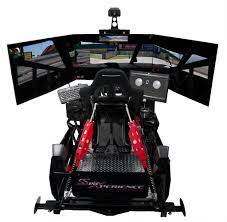Should esports be considered “real” sports? A common argument levied against esports as sports is that esport gamers don’t experience the same level of physical exertion and intensity as traditional sports athletes. Although many video games engage players in non-trivial, mechanically difficult challenges that require, “familiarity with the designed system and a cultivation of physical or strategic skills”, critics often point to the interface between physical body and digital game as the differentiating factor between sports and esports (1). The common perception is that gaming is not a full body activity, but rather a task for cognitive challenge and mental stamina with small mechanical inputs via keyboards, controllers, or other human-computer interfaces. One online article sums up this position succinctly, “Overall, esports are not real sports because of the lack of physical exertion, full-body coordination, athleticism, and intensity” (2). In other words, the mechanical difficulty present in video games is claimed to be different in kind to that of sports like soccer or basketball.
Setting aside debates about the supposed dichotomy between esports and sports for the moment, let’s assume that full-body, physical exertion and intensity is the deciding metric for determine esport from sport. Where would the boundary be between esport and sport in this case? What effect, if any, does the development of XR games have on this distinction?

Take the VR rhythm game Beat Saber as an example. In this game, the player dons a VR headset and uses two hand-held motion controllers to slash through virtual blocks that represent musical beats or notes. Along with the mechanical difficulty present in the musical timing of the game, the player must also train their physical body to slash in the correct direction as indicated by each block as well as avoid obstacles by physically moving their body. While Beat Saber isn’t the perfect example because it lacks the multiplayer, competitive aspect that many people associate with sports, in contrast with a video game like League of Legends, a popular multiplayer game with a well-respected esports following, players in Beat Saber utilize a greater percentage of their physical body as input to the video game. Using mechanical difficulty and full-body physical exertion as the differentiating metric between esport and sport, at what point would a video game like Beat Saber cross the boundary into sport? Is there really a difference in kind between mechanical difficulty in video games and sports or can one morph into the other?

In the previous example, we assumed a dichotomy between sport and esport. What about the genre of video games that aims to simulate reality as closely as possible. Racing Simulation games are another example of simulation video games that approach the realism and intensity of their non-digital counter-parts. Modern systems feature near perfect physical simulations of track environmental conditions such as traction in rain or tire degradation. Paired with reactive seats and vibrations that simulate the physical experience of racing a car on a physical track, these simulation games create such realistic simulations that many professional drivers utilize racing simulators as training tools to prepare for non-digital races. Part of the thrill and physical intensity of real racing is the threat of death or injury by crashing into other competitors or track structures. What would happen if Racing Simulation games implemented game mechanics that physically harm the player upon failure? Is there a point where mechanical difficulty in Racing Simulators will be indistinguishable from mechanical difficulty in real motor sports?
(1) cited from Katie Salen and Eric Zimmerman, in Patrick Jagoda’s On Difficulty in Video Games
(2) https://psucollegio.com/2022/09/16/esports-are-not-real-sports/


I think the question of the difference between some difficulty in a tech simulation vs. a mechanical difficulty in a real life competition (in this case, a race) is really interesting. However, I would expect that programming failure could disadvantage certain drivers in ways not disadvantaging others, and since the actual build of the car is part of the competition in motorsports like NASCAR and Formula One, that particular form of failure might pose some interesting questions about fairness. Furthermore, however, I think the principles of motorsport could be introduced to esports in some interesting ways- is there some sort of game build-and-play competition that would be akin to the build-and-race model of NASCAR and F1? Or perhaps, since NASCAR builds are really just modifications of stock cars, there could be some competition between mods of a game (constrained by certain parameters) that would enable players to complete a course in that game in the fastest way possible.
Very interesting post, as someone who consumes a fair amount of esports I feel like the main distinction between esports and sports really is that “e” aspect. The digital aspect of having your actions being projected through a screen as opposed to affecting something in the real world. While beat saber might use more of your physical body your actions are not affecting a real block or a real saber, but instead something in a digital world which is why esports are distinct from real sports and I sort of feel that no degree of physical activity present in a game will make it considered a sport over an esport as long as that digital world layer exists. That’s just my take on esports vs sports though!
I like your post and especially your ending. Risk invariably changes how we play sports and esports. In terms of simulating risk, I think its also important as to how the risk is simulated because the threat of injury is different to a small shock, and although they’re both can be a result of a risky movement or action, the ramifications are different, and I’d imagine so is then the likelihood of taking risks and then how the game is played.